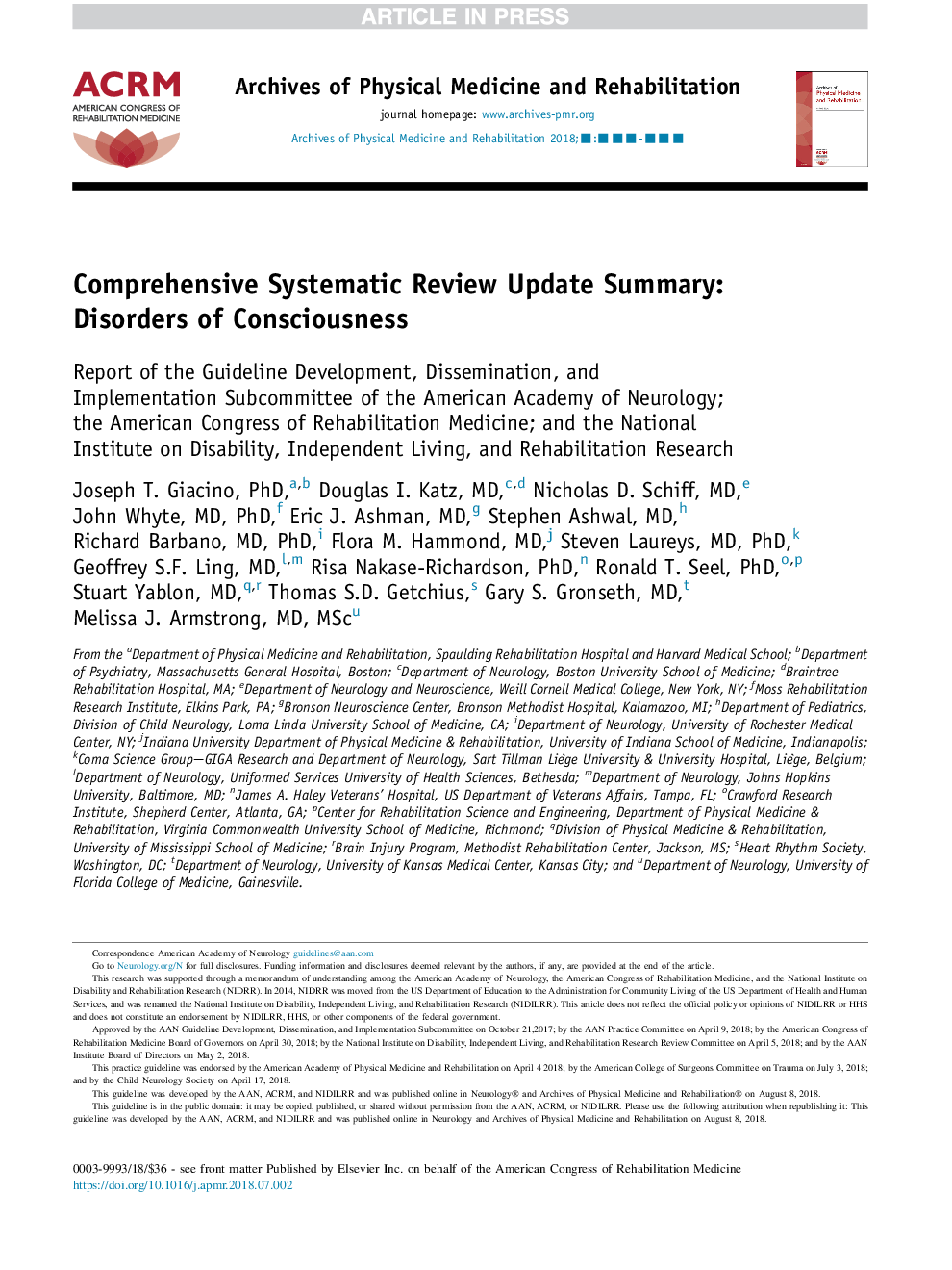| Article ID | Journal | Published Year | Pages | File Type |
|---|---|---|---|---|
| 8958070 | Archives of Physical Medicine and Rehabilitation | 2018 | 10 Pages |
Abstract
No diagnostic assessment procedure had moderate or strong evidence for use. It is possible that a positive EMG response to command, EEG reactivity to sensory stimuli, laser-evoked potentials, and the Perturbational Complexity Index can distinguish MCS from vegetative state/unresponsive wakefulness syndrome (VS/UWS). The natural history of recovery from prolonged VS/UWS is better in traumatic than nontraumatic cases. MCS is generally associated with a better prognosis than VS (conclusions of low to moderate confidence in adult populations), and traumatic injury is generally associated with a better prognosis than nontraumatic injury (conclusions of low to moderate confidence in adult and pediatric populations). Findings concerning other prognostic features are stratified by etiology of injury (traumatic vs nontraumatic) and diagnosis (VS/UWS vs MCS) with low to moderate degrees of confidence. Therapeutic evidence is sparse. Amantadine probably hastens functional recovery in patients with MCS or VS/UWS secondary to severe traumatic brain injury over 4 weeks of treatment. Recommendations are presented separately.
Keywords
MSTFEmergence from minimally conscious stateEMCSMulti-Society Task ForceLEPUWSPVSMCsDOCAANAmerican Academy of Neurologydisorders of consciousnesspersistent vegetative stateVegetative stateMinimally conscious stateUnresponsive wakefulness syndromeconfidence intervalLikelihood ratioodds ratioLaser-evoked potential
Related Topics
Health Sciences
Medicine and Dentistry
Medicine and Dentistry (General)
Authors
Joseph T. PhD, Douglas I. MD, Nicholas D. MD, John MD, PhD, Eric J. MD, Stephen MD, Richard MD, PhD, Flora M. MD, Steven MD, PhD, Geoffrey S.F. MD, Risa PhD, Ronald T. PhD, Stuart MD, Thomas S.D. Getchius, Gary S. MD, Melissa J. MD, MSc,
